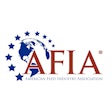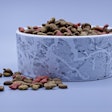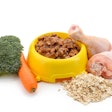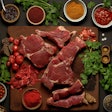My career in and around the petfood industry has afforded me the opportunity to do a lot of travel to places I normally would never get to visit. Because of the nature of my work, the majority of these outings are domestic, though occasionally I am able to attend international functions as well. Granted, my travel adventures pale in comparison to those of many others in the industry, but please grant me the chance to relate to you my experiences in a recent excursion to South Africa.
The purpose of my trip to South Africa was to give a presentation to the region's petfood trade association on the methods of nutritional adequacy substantiation in the US. I was the guest of some genuinely friendly people whose hospitality greatly exceeded my expectations, even surpassing that received on other travels in recent memory (including trips to see my relatives).
During my stay, I was able to enjoy the local cuisine, try some famous South African wine and even photograph some wild animals at a nearby game preserve. Alas, my other commitments did not allow an extended visit (I probably spent as much time in transit as I did on the ground). Anyway, although I was there to provide insight on the US ways of doing things, I was able to take away information on the state of the petfood industry in that country as well.
Petfood in South Africa
Petfood in South Africa is subject to regulation under Act 36, first enacted in 1947 and enforced by the National Department of Agriculture. Under the Act, requirements to ensure safety, nutritional adequacy and proper labeling of petfoods are in place. A major difference compared to US regulations is that products must not only be registered, but that the "V" number must be placed on the label. Fortunately, the vast preponderance (if not all) of regulatory oversight is done on a national level, so companies aren't burdened with trying to comply with the requirements of a host of individual provinces.
As in the US, a large segment of the petfood industry is represented by a "PFI," although unlike in the US, the acronym stands for the Petfood Industry Association of Southern Africa. It is embodied by a number of the major international corporations that also have a presence in the US, but include South African and regional companies as well. As I understand its mission, it is to strive to ensure the manufacture and sale of high-quality petfoods in South Africa. This is accomplished through establishment of a code of conduct to augment Act 36 and self-policing activities. By various means it also hopes to instill confidence in the consumers' perception of the nutritional value of petfoods offered for sale in the country, hence promoting purchase and feeding of commercial products to the benefit of all.
That is not an easy task, though. If memory serves me, it is currently estimated that only about 20% of the calories consumed by pets in South Africa is obtained from commercial petfoods (in the US, it's probably close to the reverse of that figure). On the bright side, there's lots of potential for the market to grow. To accomplish growth of the industry as a whole, various educational efforts and marketing strategies are in place to help promote the feeding of commercial petfood.
Industry challenges
Hindering the efforts by the conscientious segments of the industry in South Africa are a number of "rogue" manufacturers. When I first heard the term, I immediately thought of those firms in the US that seem to delight at the disparagement of the safety and/or nutritional value of the majority of commercial petfoods. However, they use the term to define those companies who sell cheap, poor-quality products that hurt the reputation of the entire industry.
Some of these rogues simply fail to register products as required, while others might label products with false registration numbers. Another strategy is to comply with the regulatory requirements in order to be properly registered, but then to subsequently circumvent the rules in order to lower production costs, e.g., "forgetting" to add the vitamin and mineral premixes to the formula. In any case, when the pet suffers from nutritional deficiencies as a result of feeding foods that are not up to acceptable standards, the pet owner loses confidence in petfoods in general and the whole industry is adversely affected.
One interesting means by which South Africa's PFI is working to fight the rogues is to offer consumers free analysis of petfoods whose quality or safety are brought into question. This program has resulted in some disturbing findings. In one case, a petfood bearing a minimum crude protein label guarantee of 21% was found to contain only 12%. When products are found to be substandard to the nutritional requirements, or otherwise out of compliance, the results of the analysis are then forwarded to the appropriate regulatory body for further consideration of action. As a result of this program, a number of rogues have been subject to regulatory action and bad publicity.
Similarities with the US
It is my understanding that Act 36 is in the process of significant revision. To that end, South Africa's PFI is working with the regulators to bring the requirements up to snuff with other countries, such as the US. To my delight, my cursory review of their work product showed a lot of reliance on the Association of American Feed Control Officials' (AAFCO) Model Petfood Regulations for guidance, along with aspects of the European Petfood Industry Federation (FEDIAF) guidelines.
As you can imagine, there was a lot of interest in my insights and opinions of AAFCO's approaches to issues such as the guaranteed analyses, declarations of calorie content and nutritional adequacy statements. While I tried to answer their questions, I suggested that a representative should attend an AAFCO meeting for even more insight. Hopefully, they'll take me up on the recommendation.
I also received many questions about topics I frequently hear in the US, such as nutraceuticals, use of the term "natural" and raw meat diets. I don't think the "organic" trend has hit there yet, but it's interesting to note that at least some issues are truly global. Anyway, I enjoyed my visit, learned a lot and only hope the South Africans got as much out of the trip as I did!














